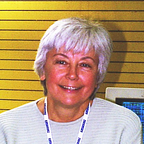Stamps That Tell a Story
Celebrating Swedish aviation then and now, and in particular a record setting ‘Weihe’.
Sweden Post issued a set of six stamps with the theme Aviation Then and Now. Swedish aviation history is shown on these stamps, honouring the 100th anniversary of the Royal Swedish Aero Club which was founded in 1900.
Sweden Post reported that this organisation is “the second oldest flying club (or aviation society) in the world,” with the Aéro-Club de France being the oldest (founded in 1898). Not knowing how they defined “flying club” or “aviation society,” it may be of interest to include here that the Royal Aeronautical Society of Great Britain was formed in 1866 with the Royal Aero Club of the United Kingdom founded in 1901.
One of these stamps shows a bright cream and red Swedish built Weihe, with the emblem of the Kungliche Svenska Aeroklubben KSAK. In the background is a yellow image of a SAAB 91 Safir and a white image of a Malmö Aviation Industry MFI-9, later known as a Bölkow Junior. The main design, the Weihe sailplane SE-SCN, is probably the most famous of all Weihe sailplanes ever built, and it has many interesting stories to tell. Built by AB Flygindustri, AFI at Halmstad in 1943, it was sold to and registered by the Aero Club.
Flown by Per Axel ‘Pelle’ Persson, a Lieutenant and instructor with the Swedish Air Force, this ship took first place in the 1948 Internationals in Switzerland. His flight along the Alps, from Samedan to Geneva, a distance of about 290km, truly impressed Swiss pilots; no one had even considered to attempt such a flight before.
At the Internationals in Örebro, Sweden, in 1950, SE-SCN was flown by Billy Nilsson, again to first place. In 1956, a new Swedish feminine record was achieved by Gun-Britt Flodén. A relative newcomer to the sport of soaring, she flew this Weihe to the southern most tip of Sweden, a distance of 315.6km. It is noteworthy that this record still stands, forty-six years later!
The rest of the story about this famous SE-SCN is not quite as glamorous. It was sold in 1962 to a pilot in the United States and registered as N8602E. It changed hands a few times and is currently owned by an individual in Texas, who bought it in 1972 with the intent to refurbish and then fly it. However the project was much larger than envisioned, as the wooden ship was built with kaurit glue and, by this time, highly deteriorating. A restorer from the Augusta, Georgia area was interested in working on it and took over the project. Contact broke off and the current whereabouts of the sailplane are unknown.
The stamps were the work of Thorsten Fridlizius, a stamp designer for Sweden Post and Vice President of the Swedish Vintage Glider Society. Thorsten, who is also an advertising consultant specialising in aviation, kindly helped in writing this article. The photo above shows him with some of the designs for this set of stamps. He is wearing his Vintage Glider Club sweatshirt.
Fridlizius used a photo taken by him in the mid-1950s, published as the cover for Schweizer Aero-Revue (see key photo, above title), as the basis for the design. It was his intention to honour the Swedish Aero Club, the pilots who set new records with this particular Weihe and Hans Jacobs who designed this clean, simple and beautiful sailplane in 1938.
©2002, 2022 Simine Short
Resources
- Stories by Great Glider Pilots All over the World by Erik Berg. — Published by Airborne Publishing, Denmark in 1993.
- Aviation: An Historical Survey from Its Origins to the End of World War II by Charles Gibbs-Smith — Published by Science Museum, London in 1970.
- Stamps That Tell a Story: The Series — Catch up on your missing instalments of this excellent and informational series presented previously in the New RCSD.
This article first appeared in the May, 2002 issue of Gliding magazine. Simine Short is an aviation researcher and historian. She has written more than 150 articles on the history of motorless flight and is published in several countries around the world as well as the United States. She is also the editor of the Bungee Cord, the quarterly publication of the Vintage Sailplane Association.
Read the next article in this issue, return to the previous article in this issue or go to the table of contents. A PDF version of this article, or the entire issue, is available upon request.
